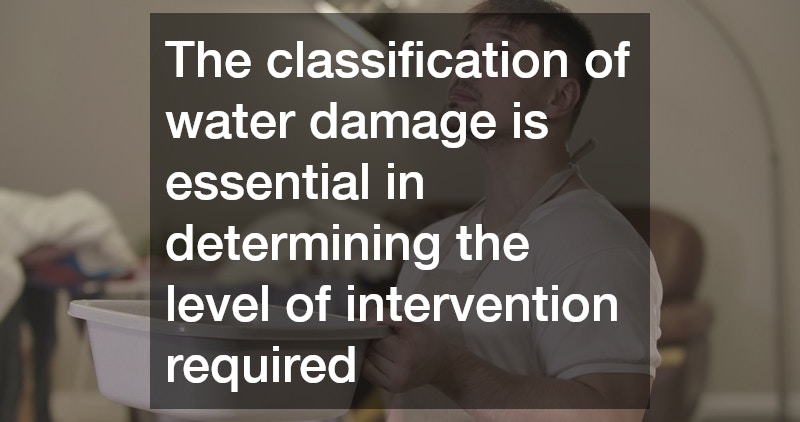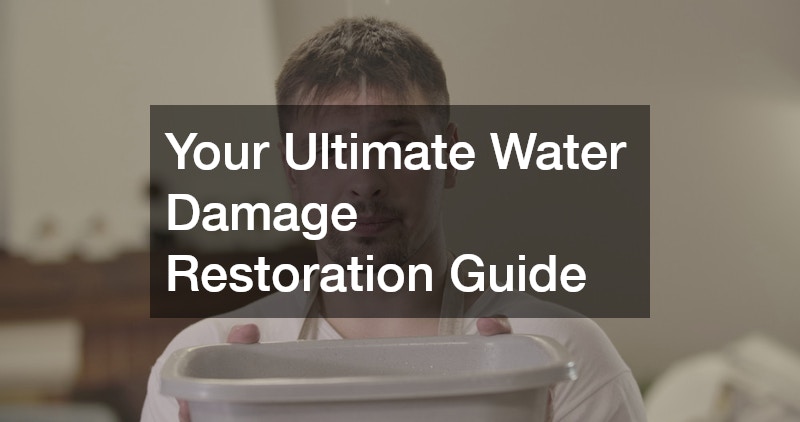
Water damage can wreak havoc on your home, causing structural issues and promoting mold growth if not addressed swiftly. This article serves as your comprehensive guide on water damage restoration, providing valuable insights and actionable steps to restore your property effectively. We will explore everything from initial assessment to long-term preventive measures.
Understanding Water Damage
Water damage can occur due to various reasons, including natural disasters, plumbing failures, or roof leaks. Each cause presents unique challenges and requires specific approaches for effective restoration. Identifying the source of the water intrusion is crucial in implementing the right restoration tactics and preventing future damage.
The classification of water damage is essential in determining the level of intervention required. Categories range from clean water damage, such as rainwater or pipe leaks, to more severe scenarios involving sewage or floodwaters. Recognizing these categories can help in the systematic planning of the restoration process.
Timely intervention is critical in minimizing the extent of water damage. Immediate action can prevent further deterioration of building materials and reduce the risk of mold growth. Therefore, understanding the urgency of addressing water damage is vital in protecting your property and health.
Initial Assessment and Safety Measures
Before diving into the restoration process, conduct a thorough assessment of the affected area. This includes identifying the severity of damage, moisture levels, and potential safety hazards. Proper evaluation ensures the selection of appropriate restoration techniques and necessary equipment.
Safety should always be a priority when dealing with water damage. Be aware of electrical hazards and potential contaminants in floodwaters. Wearing protective gear and turning off power sources in affected areas can help mitigate these risks significantly.
Once safety measures are in place, document the extent of the damage for insurance purposes. Photographs and detailed notes will be invaluable during the claims process. Accurate documentation ensures that all affected areas are accounted for, facilitating a smoother restoration journey.
Steps in Water Damage Restoration
The water damage restoration process typically begins with water removal. Employ powerful pumps and vacuum units to extract water quickly from your property. Quick removal is essential to prevent additional damage and to kickstart the drying process efficiently.
Drying and dehumidification are critical steps following water removal. Use industrial dehumidifiers and air movers to eliminate residual moisture from building materials. Effective drying prevents mold development and further structural issues, ensuring a safe environment for occupants.
Once the area is thoroughly dried, cleaning and sanitizing the affected space is crucial to eliminate any potential health hazards. Use appropriate cleaning agents to disinfect surfaces and remove any harmful bacteria or pathogens. This step helps restore the safety and hygiene of your property.
Preventing Future Water Damage
Implementing preventive measures is essential to safeguard your home against future water damage threats. Conduct regular inspections of your plumbing system to identify and rectify leaks promptly. Simple maintenance can save you from costly repairs and extensive restoration efforts in the future.
Another effective strategy is to install sump pumps and drainage systems around your property. This equipment helps manage water flow during heavy rains, reducing the risk of flooding. Regular maintenance of these systems ensures their optimal performance when needed most.
Lastly, consider investing in water detection sensors and alarms. These devices alert you to the presence of water in vulnerable areas, allowing you to address potential issues before they escalate. Early detection is invaluable in preventing extensive damage and facilitating prompt water damage restoration.
Working with Restoration Professionals
While some water damage restoration tasks can be undertaken by homeowners, engaging professionals is advisable for extensive damage. Restoration experts possess the necessary skills, equipment, and experience to manage complex situations efficiently. Their expertise ensures a high-quality restoration outcome, minimizing disruptions to your daily life.
When selecting a restoration company, consider their reputation, certifications, and reviews from previous clients. Professional credentials and positive feedback indicate reliable service and successful restoration tracks. Due diligence in choosing a restoration partner can significantly impact the recovery process.
A professional restoration company not only handles the physical restoration but also assists in the insurance claims process. They can communicate intricately with insurance adjusters, ensuring fair appraisals and adequate compensation for your loss. This support can alleviate the stress associated with navigating insurance complexities.
Hopefully, this guide has equipped you with the essential knowledge of water damage restoration, empowering you to protect your property effectively. Remember, timely action, regular maintenance, and professional assistance are your best allies in combating water damage. Stay vigilant, prepared, and informed to ensure a safe and secure living environment.

